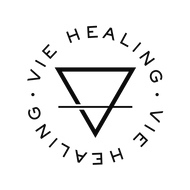written by JILL DIDONATO
Chances are you spend several hours a day hunched over a screen—no judgment, we're right there with you. And, to compensate for being sedentary, you might go extra hard working out. Add stress, poor sleep hygiene, and you've got a cocktail guaranteed to make your muscles tense up and tighten. At the end of the day, you're left with aches and pains that take a toll on your overall wellbeing, impairing your ability to feel comfortable in your body. "Especially right now, it's important to understand where muscle pain is coming from in order to treat it," says Emilie Hoyt, founder and CEO of bath and body line Lather. "Is it activity? A mental or emotional strain? Each can cause your muscles to become tight, which leads to soreness."
Relieving muscle soreness is not only a must to reboot your mood, it's something you can take charge of yourself, restoring a sense of control over your body. You don't need a massage therapist to target sore muscles; these remedies require simple lifestyle shifts and at-home practices. Ahead, we've compiled expert advice to help get rid of sore muscles while helping you unwind, find some sweet relief, and ultimately, tap into your zen.
Stay Hydrated
One of the most essential things you can do to get rid of sore muscles is stay hydrated. Not only will this help lubricate the joints, proper hydration will speed up recovery and help calm inflammation. "I like to make my own electrolyte beverages during the day with a splash of pink salt and a squeeze of lemon," says Nancy Richer, a ballerina and founder of the Richer Movement, concierge ballet based training. "I aim for drinking half my body weight in ounces of water after that."
Try a Split Workout Routine
If you're exercising regularly, it's important to find a workout split to allow for sufficient recovery time between sweat sessions. Fitness expert and personal trainer, Miriam Fried says, "You need to give your muscles time to recover between workouts, so ideally, to have them working at an optimal capacity, we want to wait two to three days before working the same muscle group." She adds, "If you’re still finding you’re going into every workout feeling sore, it could be a sign you are not taking proper steps for recovery. This could mean you're neglecting stretching, not getting adequate nutrition, or overtraining."
Jordan Samuel Pacitti, a former ballet dancer and founder of Jordan Samuel Skin, says "Although I'm not a medical professional, these tips worked for me when I was a dancer_ I would stretch before and after working out. This is something so overlooked and can really help to minimize aches and pains."
In particular, Pacitti aims to stretch out the front and back of the hips and calves. This helps relieve muscle tenderness as do stretches to "keep hamstrings limber," he says. "I like to hold all stretches for at least thirty seconds." He's also a fan of working through pain (but gently) to remove the build up of lactic acid. "If a certain group of muscles is sore I work that area more gently that day, but still keep moving," he says.
Richer agrees that working through muscle tension is overall a win for the body. "In my training as a ballerina, it generally felt best to train when I felt sore and not take a rest day. That is when I noticed the most improvement and increase in strength." She too, emphasizes the importance of a good stretch to seal the workout progress. "Generally, you want to do stretches that are dynamic at the beginning of your workout and save the sustained stretching for the end of your workout when your muscles are warm."
Use a Foam Roller for Myofascial Release
Self-myofascial release, a form of self-massage using a foam roller, is a game changer when it comes to relieving muscular tension. "After each workout, set aside 10 to 15 [minutes] to stretch and roll out your muscles using a foam roller," says Fried. "I generally suggest that you program it into your workout so you don’t neglect it."
Rolling out just a few times a week can make a difference in opening up your muscles. But feel free to roll out everyday. "You want to roll slowly, pausing when you hit a tender spot and breathing for a few seconds as you hold and apply pressure to the sore spot," explains Fried.
Soak in a Warm Bath
"A bath is my favorite way to unwind after a long day of training," says Richer. "I usually put two cups of epsom salt in."
Hoyt is also a fan of warm baths with epsom salts. "The salts give your body a high level of magnesium, which can be absorbed easily through the skin," she says. "That helps muscles relax." She suggests meditating or at least taking deep breaths while soaking in the tub. "Try to be mindful and patient," she says, adding that a washcloth soaked in camomile tea over the eyes can do wonders to melt away tension.
Practice Acupressure
One of the best ways to alleviate sore muscles is by increasing blood circulation through acupressure. But you don't need to go to the spa to reap the benefits of this healing modality—in fact, you can practice this healing art on yourself. Mona Dan, LAc, herbalist, acupuncturist, expert in Chinese Traditional Medicine, and founder of Vie Healing, explains. "Chinese Medicine looks at sore muscles as a result of blood and energy stuck in areas of the body. Learning gua sha and cupping techniques at home is also very beneficial."
Incorporate acupressure techniques into your post-shower rubdown. “Apply a two-finger grip below the area and squeeze until you have a feeling of a 'good hurt,'" explains Dan. "Do not get to the point of bad pain. Squeeze for 20 seconds and release, then go to the area above the pain and hold again for 20 seconds."
Once you've worked through the pressure points, be sure to follow with gentle massage. "You should feel a level of relaxation because of the focused blood flow,” says Dan.
And just like the myriad streaming workouts available, you can set up a telemedicine session with a practitioner who can teach you how to work on your body specifically.
Add CBD to Your Routine
Cannabidiol (CBD) skincare and tinctures are not only on-trend, they're a blessing for immediate pain relief. "CBD's impact on pain has to do with its role in one of our body’' key functional systems_ the Endocannabinoid System, or simply ECS," says Karena Dawn, co-founder of the lifestyle wellness community, Tone It Up. She continues, "This system is responsible for keeping our body in a steady state. It helps regulate our sleep, mood, pain, appetite, inflammation, memory, reproduction, and more. When we consume CBD, we are helping the ECS work its wonders."
Adding CBD to your wellness routine can ease muscular tension in a pinch. "I've used CBD for pain when I feel stressed and my neck and shoulder muscles are tense and sore to speed my recovery process," says Dawn.
Apply Heat
If you're wondering whether to add cold or heat to sore muscles, definitely go with heat. "Heat helps move blood whereas cold constricts the area of blood flow," says Dan. "Blood itself brings all the healing chemicals to the area to relieve pain." She adds that at first, heat may make the area hurt more, but after a few minutes you should feel a release.
Topical products can offer heating properties to tense muscles, and often contain camphor, a warming analgesic and anesthetic used to relieve pain. If you apply post-bath, Hoyt advises you to wait until your skin cools to avoid irritation.
Rub Your Feet
Not only do your feet contain thousands of nerve endings, they are made up of 52 bones, one quarter of all the bones in your body. The muscles and tendons in your feet serve as connective tissue to your limbs, and when your feet are achy and sore, so is the rest of your body.
A foot rub can help focus realignment, but more than that, it's something you can do for yourself that feels divine.





